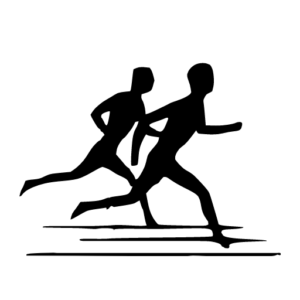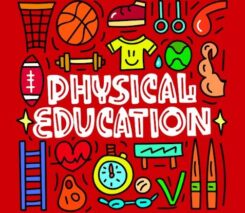Course Code: PPL1O

Course Description
This course equips students with the knowledge and skills they need to make healthy choices now and lead healthy, active lives in the future. Through participation in a wide range of physical activities, students develop knowledge and skills related to movement competence and personal fitness that provide a foundation for active living. Students also acquire an understanding of the factors and skills that contribute to healthy development and learn how their own well-being is affected by, and affects, the world around them. Students build their sense of self, learn to interact positively with others, and develop their ability to think critically and creatively.
Department: Health
Course Type: Open
Credit Value: 1.0
Prerequisite: None
Curriculum Policy Document: Health and Physical Education, The Ontario Curriculum,
Course Developer: Canadian Global School
Development Date: 2021
Course Outline
Healthy Active Living Education PPL10- Total Hours (110 Hours)
Unit One (25 Hours)
Unit Two (23 Hours)
Unit Three (28 Hours)
Unit Four (32 Hours)
RST and Final Exam 30% (2 Hours)
Resources required by the student:
- All recommended resources are intended to guide a student toward the items they may want to utilize throughout the course. It should be noted that failure to obtain the recommended items will not prevent a student from completing the course. Students are provided options at all assessment points and can complete the course without investing in specialty items. Online Students must use a third party coach or fitness instructor approved by Canadian Global School to earn their hours. The coach and/or fitness instructor will be required to verify hours, fill out expectation checklists and communicate with the teacher when needed. The teacher will provide course material online for all other curriculum expectations and a Rich Summative Task.
- Laptop and/or personal computer (preferably with Google Chrome or Mozilla Firefox as a web browser)
- Access to video recording and handwritten work scanning (mobile phone, tablet, iPad, webcams)
- Stable internet connection
- A calculator (online or hand-held)
- Any equipment/clothing required by the coach or fitness instructor approved by the school
The student will also be required to do the following:
- Plan, create, and execute a healthy eating and fitness plan to last a minimum duration of four weeks. The student can execute both the healthy eating and fitness plan concurrently.
- Access to Google Suites or Microsoft Education for word processing software and presentation software. (The school will distribute accounts to students).
- Supplemental Readings
- Access to Canva for Education if needed
Note: This course is entirely online and does not require or rely on any textbook.
Grade 9, Healthy Active Living Education
Overall Expectations:
By the end of this course, students will:
- participate actively and regularly in a wide variety of physical activities, and demonstrate an understanding of factors that can influence and support their participation in physical activity now and throughout their lives;
- demonstrate an understanding of the importance of being physically active, and apply physical fitness concepts and practices that contribute to healthy, active living;
- demonstrate responsibility for their own safety and the safety of others as they participate in physical activities
Overall Expectations:
By the end of this course, students will:
- perform movement skills, demonstrating an understanding of the basic requirements of the skills and applying movement concepts as appropriate, as they engage in a variety of physical activities;
- apply movement strategies appropriately, demonstrating an understanding of the components of a variety of phy
Overall Expectations:
By the end of this course, students will:
- demonstrate an understanding of factors that contribute to healthy development;
- demonstrate the ability to apply health knowledge and living skills to make reasoned decisions and take appropriate actions relating to their personal health and well-being;
- demonstrate the ability to make connections that relate to health and well-being – how their choices and behaviours affect both themselves and others, and how factors in the world around them affect their own and others’ health and well-being.
Strategies for Assessment and Evaluation of Student Performance
There are three forms of assessment that will be used throughout this course:

Assessment for learning will directly influence student learning by reinforcing the connections between assessment and instruction, and provide ongoing feedback to the student. Assessment for learning occurs as part of the daily teaching process and helps teachers form a clear picture of the needs of the students because students are encouraged to be more active in their learning and associated assessment. Teachers gather this information to shape their teaching environment.
Assessment for learning is:
- Ongoing
- Is tied to learning outcomes
- Provides information that structures the teachers’ planning and instruction
- Allows teachers to provide immediate and descriptive feedback that will guide student learning
The purpose of assessment for learning is to create self-regulated and lifelong learners.
Assessment as learning is the use of a task or an activity to allow students the opportunity to use assessment to further their own learning. Self and peer assessments allow students to reflect on their own learning and identify areas of strength and need. These tasks offer students the chance to set their own personal goals and advocate for their own learning.
The purpose of assessment as learning is to enable students to monitor their own progress towards achieving their learning goals.
Assessment of learning will occur at or near the end of a period of learning; this summary is used to make judgements about the quality of student learning using established criteria, to assign a value to represent that quality and to communicate information about achievement to students and parents.
Evidence of student achievement for evaluation is collected over time from three different sources – observations, conversations, and student products. Using multiple sources of evidence will increase the reliability and validity of the evaluation of student learning.
Teaching and Learning Strategies
Using a variety of instructional strategies, the teacher will provide numerous opportunities for students to develop skills of inquiry, problem solving, and communication as they investigate and learn fundamental concepts. The integration of critical thinking and critical inquiry skills will provide a powerful tool for reasoning and problem solving, and is reflected in a meaningful blend of both process and content.
- Differentiated Learning and Assessment: This course allows students the flexibility to not only work through the course in the order they are most comfortable with, but also lets them select options for assessments that best fit their respective skill sets and comfort levels. The goal is to allow the student to demonstrate their understanding and ability through a variety of assessment opportunities.
- Communicating – Students will communicate their learning in a variety of ways.
- Technology and Media Strategies: Activity-specific skills and strategies are supported by video instruction. This allows students to see the movements prior to participation.
- Thinking Skills Strategies: Through the use of case studies and self-reflection, students will learn to think creatively and critically about issues involving healthy and active living.
ENROLL A CHILD
The Final Grade
| Percentage of Final Mark | Categories of Mark Breakdown |
| 70% | Assessments of Learning Tasks Throughout the Term |
| 30% | Final Written Examination And/Or RST |
A student’s final grade is reflective of their most recent and most consistent level of achievement.
The balance of the weighting of the categories of the achievement chart throughout the course is:
| Healthy Active Living Education | Knowledge | Inquiry/Thinking | Communication | Application |
| 25% | 25% | 25% | 25% |
The Report Card
Student achievement will be communicated formally to students via an official report card. Report cards are issued at the midterm point in the course, as well as upon completion of the course. Each report card will focus on two distinct, but related aspects of student achievement.
First, the achievement of curriculum expectations is reported as a percentage grade. Additionally, the course median is reported as a percentage. The teacher will also provide written comments concerning the student’s strengths, areas for improvement, and next steps. Second, the learning skills are reported as a Needs Improvement, Satisfactory, Good and Excellent. The report card also indicates whether an OSSD credit has been earned.
Upon completion of a course, Canadian Global School will send a copy of the report card back to the student’s home school (if in Ontario) where the course will be added to the ongoing list of courses on the student’s Ontario Student Transcript. The report card will also be sent to the student’s home address.
Program Planning Considerations for online course
Cheating and Plagiarsim
Canadian Global School commits to having policies for assessments that minimize the risk of cheating. We also commit to begin each course with refresher learning on academic integrity.
In the event of incidences of academic dishonesty, the student, Academic Director (and, in the case of students under 18, their parents) will be notified of the occurrence, of the consequence, and of the potential consequences of subsequent incidents.
Improper Citation
Grades 11 and 12
First Instance: A warning and an opportunity to redo the piece.
Subsequent Instance: An opportunity to redo the piece to a maximum grade of 75%.
Unaccredited Paraphrasing
Grade 11 and 12
First Instance: An opportunity to redo the piece to a maximum grade of 75%.
Subsequent Instance: An opportunity to redo the piece to a maximum grade of 50%.
Unaccredited Verbatim
Grades 11 and 12
First Instance: An opportunity to redo the piece to a maximum grade of 50%.
Subsequent Instance: A grade of zero. No opportunity to resubmit.
Full Plagiarism
Grade 11 and 12
First Instance: A grade of zero. No opportunity to resubmit.
Subsequent Instance: A grade zero. No opportunity to resubmit.

Instructional Approaches
Teachers will use a variety of instructional strategies to help students become independent, strategic and successful learners. The key to student success is effective, accessible instruction. When planning this course of instruction, the teacher will identify the main concept and skills of the course, consider the context in which students will apply their learning and determine the students’ learning goals. The instructional program for this course will be well planned and will support students in reaching their optimal level of challenge for learning, while directly teaching the skills that are required for success.
Understanding student strengths and needs will enable the teacher to plan effective instruction and meaningful assessments. Throughout this course the teacher will continually observe and assess the students’ readiness to learn, their interests, and their preferred learning styles and individual learning needs.
Teachers will use differentiated instructional approaches such as:
- adjusting the method or pace of instruction
- using a variety of resources
- allowing a wide choice of topics
- adjusting the learning environment
- scaffolding instruction
During this course, the teacher will provide multiple opportunities for students to apply their knowledge and skills and consolidate and reflect upon their learning.
Planning the Program for Students with Special Educational Needs
The teacher in this course is the key educator of students with special education needs. The teacher has a responsibility to help all students learn, and will work collaboratively with the guidance counselor, where appropriate, to achieve this goal. In planning this course, the teacher will pay particular attention to the following guidelines:
- All students have the ability to succeed
- Each student has his or her own unique patterns of learning
- Successful instructional practices are founded on evidence-based research, tempered by experience
- Universal design and differentiated instruction are effective and interconnected means of meeting the learning or productivity needs of any group of students
- Online teachers are the key educators for a student’s literacy and numeracy development
- Online teachers need the support of the larger school community to create a learning environment that supports students with special education needs
- Fairness is not sameness

The teacher will use the following strategies:
| Students with Special Educational Needs | |
|
|
Planning the Program for Students with English as a Second Language
In planning this course for students with linguistic backgrounds other than English, the teacher will create a safe, supportive, and welcoming environment that nurtures the students’ self-confidence while they are receiving course instruction. Most English language learners who have developed oral proficiency in everyday English will nevertheless require instructional scaffolding to meet curriculum expectations. The teacher will adapt the instructional program in order to facilitate the success of these students in their classes. Appropriate adaptations and strategies for this course will include:
| Students with English as Second Language | |
|
|
Supporting First Nations, Métis and Inuit Students
Canadian Global School will promote active and engaged citizenship, which includes greater awareness of the distinct place and role of Indigenous (First Nation, Métis, and Inuit) peoples in our shared heritage and in the future in Ontario.
Canadian Global School will:
- increase the focus in school strategic planning to promote the voluntary, confidential self-identification of First Nation, Métis, and Inuit students as a means to enhance the success and well-being of Aboriginal students and to help close the achievement gap
- continue to identify and share practices and resources to help improve First Nation, Métis, and Inuit student achievement and close the achievement gap
- increase the training in our schools to respond to the learning and cultural needs of First Nation, Métis, and Inuit students
- provide quality programs, services, and resources at our schools to support First Nation, Métis, and Inuit student
- provide quality programs, services, and resources at our schools who support First Nation, Métis, and Inuit students to help create learning opportunities that support improved academic achievement and identify building
- provide curriculum links that facilitates learning about contemporary and traditional First National, Métis, and Inuit cultures, histories, and perspectives among all students
- develop awareness among teachers of the learning styles of First Nation, Métis, and Inuit students and employ instructional methods designed to enhance the learning of all First Nation, Métis, and Inuit students
- implement targeted learning strategies for effective oral communication and mastery of reading and writing
- implement strategies for developing critical and creative thinking
- provide access to a variety of accurate and reliable Aboriginal resources such as periodicals, books, software, and resources in other media, including materials in the main Aboriginal languages in schools with First Nation, Métis, and Inuit students
- provide a supportive and safe environment for all First Nation, Métis, and Inuit students
The Role of Information and Communication Technology
ICT tools will be integrated into this course for whole-class instruction and for the design of curriculum units that contain varied approaches to learning in order to meet diverse needs and interests of the students in this class. At the beginning of this class, all students will be made aware of issues related to Internet privacy, safety, and responsible use, as well as of the potential for abuse of this technology, particularly when it is used to promote hatred. ICT used in this course will include:
| Information and Communication Technology | |
|
|
Literacy, Mathematical Literacy, and Inquiry Skills
At Canadian Global School it is the responsibility of all of our teachers to explicitly teach literacy and inquiry skills. The following skills will be developed in each course delivered at Canadian Global School:
Equity & Inclusive Education in the Learning Environment
At Canadian Global School we embrace multiculturalism, human rights and diversity as fundamental values. Bullying, hate propaganda and cyber bullying, racism, religious intolerance, homophobia and gender-based violence are still evident in
Healthy Relationships in the learning Environment
At Canadian Global School , every student is entitled to learn in a safe, respectful and caring environment, free from violence and harassment. The teacher will create a safe and supportive environment in the class by cultivating
Financial Literacy Connections
There is a growing recognition that the education system has a vital role to play in preparing young people to take their place as informed, engaged, and knowledgeable citizens in the global economy.
Environmental Education Connections
Although there are no specific environmental connections in this course, teachers will develop an environmental understanding fostered through
Ethics in the Learning Environment
At Canadian Global School teachers provide varied opportunities for students to learn about ethical issues and to explore the role of ethics in decision making.
Cooperative education programs allow students to earn secondary school credits while completing a work placement in the community. These programs compliment students’ academic programs and are valuable for all students, whatever their post-secondary destination.
Cooperative education courses may be earned using this course as one of the related courses.
Central to the philosophy at Kanata Academy International is the focus on experiential learning. Planned learning experiences in the community, including job shadowing, field trips, and hands-on experiences will provide our students with opportunities to see the relevance of their classroom learning in a work setting, make connections between school and work, and explore a career of interest as they plan their pathways through secondary school and make postsecondary plans.
As part of every course, students must be made aware that health and safety in their learning environment are the responsibility of all participants – at home, at school, and in the workplace. Teachers will model safe practices at all times when communicating with students online.
Although Kanata Academy International does not have an official school library, students are encouraged to use e-books, local libraries, GALE resource archives and Curriculum Video Digital resources to develop important research and inquiry skills.
Promotion of Careers
The knowledge and skills students acquire in this course will be useful in helping students recognize the value of their education and applications to the world outside of school and identify possible careers, essential skills and work habits required to succeed. Students will learn how to connect their learning in asking questions and finding answers to employable skills.
During this course the teacher will:
- ensure that all students develop the knowledge and skills they need to make informed education and career/life choices;
- Provide learning environment and online school-wide opportunities for this learning; and;
- Engage parents and the broader community in the development, implementation, and evaluation of the program, to support students in their learning
- Use the four-step inquiry process linked to the four areas of learning
- Knowing yourself – Who am I ?
- Exploring opportunities – What are my opportunities?
- Making decisions and setting goals – Who do I want to become?
- Achieving goals and making transitions – What is my plan for achieving my goals?
The teacher will support students in this course in education and career/life planning by providing them with learning opportunities, filtered through the lens of the four inquiry questions, that allow them to apply subject-specific knowledge and skills to work-related situations; explore subject-related education and career/life options, and become competent, self-directed planners.

